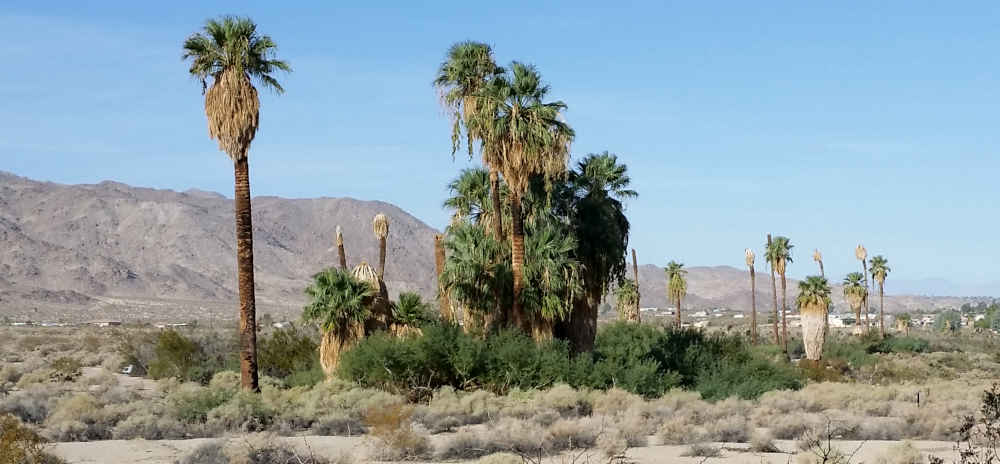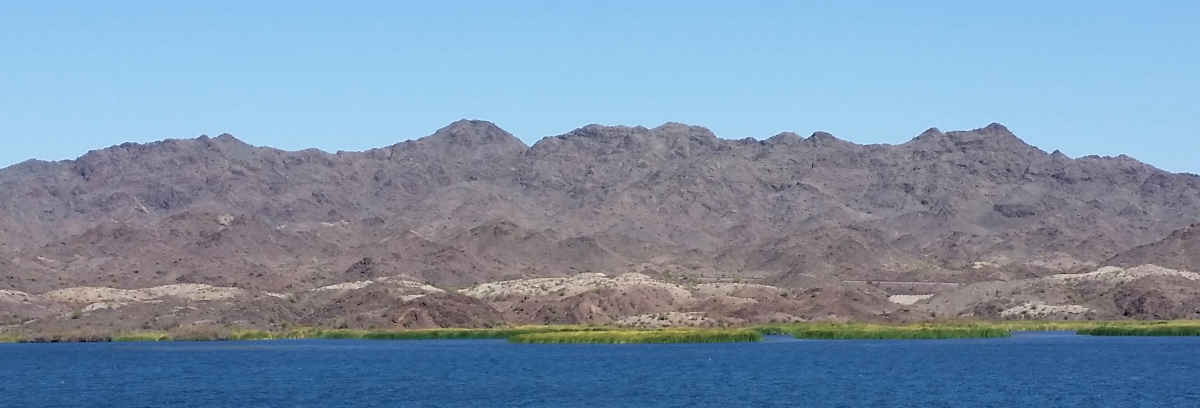Chemehuevi Potters

California fan palms at the Oasis of Mara
The Chemehuevi were a tribe scattered across the southeastern Mohave Desert, from Joshua Tree to the Colorado River. They were never subdued by the Spanish, it took the incoming Euro-American hordes along the California Trail to do that. And they weren't really conquered so much as starved out by the flood of incoming Euro-Americans following the California Trail.
The Oasis of Mara, pictured in the photo above, was one of the Chemehuevi people's regular watering holes for hundreds of years. Within a few years of the 1849 California gold rush, the oasis was seized by white ranchers and the people were denied access at the point of a gun. By the early 1940s, the local water table had been pumped so low the springs stopped coming to the surface. Since then the National Park Service has been pumping water in from the nearby California Aqueduct to the keep the fan palms alive. Today the site is on the grounds of the Joshua Tree National Park Visitor Center near the north entrance to the park.
The Chemehuevi had long been a nomadic tribe, moving around the Mohave landscape with the weather and the food supply. Once the miners and ranchers started flooding in, their wandering days were numbered. That said, it was 1907 before the government granted them reservation land of their own.
About 300,000 acres of land on both sides of the Colorado River had been set aside as the Colorado River Indian Reservation in 1865. The documents creating that did not specify the reservation was limited to any particular tribe. The property is a few miles downstream of where Parker Dam is now. It was first populated by members of the Mohave tribe, then came most of the Chemehuevis (some went to other California reservations nearer the coast).
In the late 1880s a severe drought caused some Chemehuevis to move north along the Colorado River and set up irrigated farmlands in the Chemehuevi Valley. That land was against the Colorado River east of the Chemehuevi Mountains. It was the eastern edge of their ancestral hunting grounds and it was limited but it was relatively safe for them and it worked for them. In 1907 Congress gave them about 30,000 acres there as a reservation of their own. Then Parker Dam was built and the gates closed. As Lake Havasu filled, their reservation was flooded until about 8,000 acres of their 30,000-acre reservation was under water, including virtually all of their irrigated agricultural acreage.
Many of the Chemehuevis moved back to the Colorado River Indian Reservation. A few years later the Bureau of Indian Affairs started moving in some Diné and Hopi families to join them.
Glen Canyon Dam was being completed near the Navajo and Hopi homelands at the time. To reduce the chances of future soil erosion silting up the new Lake Powell (that's the gist of what the enabling documents said), the Bureau of Indian Affairs and the Department of Reclamation were systematically rounding up and culling the Hopi and Diné herds of cattle and sheep to about 1/3 of what they had been. Prior to this federal "intervention," many members of both tribes had been able to count on products from their herds for their prosperity. With that government-induced economic destruction, many Hopi and Diné families elected to take BIA money and relocate to new housing on the Colorado River Indian Reservation.
Barring any other explanation, I suspect that someone among the Hopi families was an accomplished potter. From what I've seen, I think Teresa Wildflower learned her skill with clay from that potter. Niadi Wildflower learned it from her mother, Teresa. That said, I haven't yet come across reference to any other modern Chemehuevi potters, nor any other potters from the Colorado River Indian Reservation. There are other modern Chemehuevi artists, like Cara Romero, an award-earning fine art photographer who is married to Diego Romero, an award-earning potter from Cochiti Pueblo.
The Mohave have long had a figurative pottery tradition of their own, based on their religion of dreaming. When the two tribes lived next to each other in the desert, some Chemehuevis learned the process from the Mohaves and produced figures of their own. For the Chemehuevis, that seems to have died out around the time of the move to the Colorado River. The productions of the Wildflower mother and daughter bear no resemblance to them.

The Chemehuevi Mountains rise west of Lake Havasu